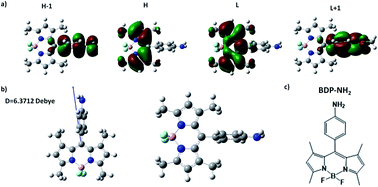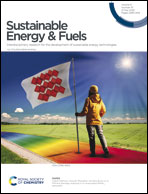Defect passivation in perovskite solar cells using an amino-functionalized BODIPY fluorophore†
Abstract
The presence of defects formed during the growth and crystallization of perovskite films is a limiting factor to achieve high efficiency and stability in perovskite solar cells. Here, we present a robust route to passivate bulk and surface defects in perovskite films by using an amino-functionalized BODIPY fluorophore. The addition of amino-BODIPY into the prototype methyl ammonium lead iodide (MAPbI3) perovskite solution significantly altered the nanomorphology of the perovskite film and alleviated the defect formation leading to efficiency enhancement and prolonged stability of perovskite solar cells with a regular structure. Similar results were obtained when using the BODIPY fluorophore in chlorobenzene (CB)-based antisolvent treatment of spin-coated perovskite films in inverted perovskite solar cells. In addition, reduction in the electron extraction barrier was evidenced. Our approach represents a universal passivation methodology for boosting the efficiency and stability in both regular and inverted perovskite solar cells.



 Please wait while we load your content...
Please wait while we load your content...